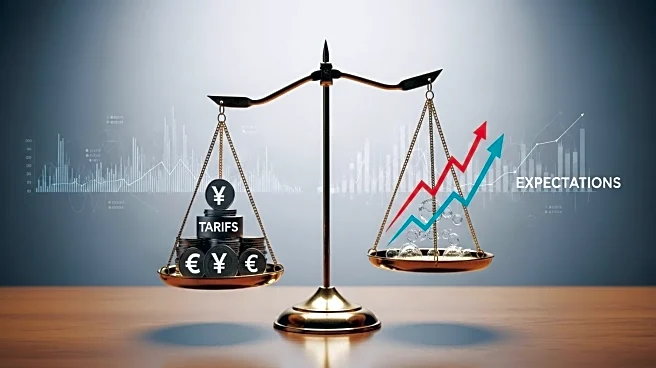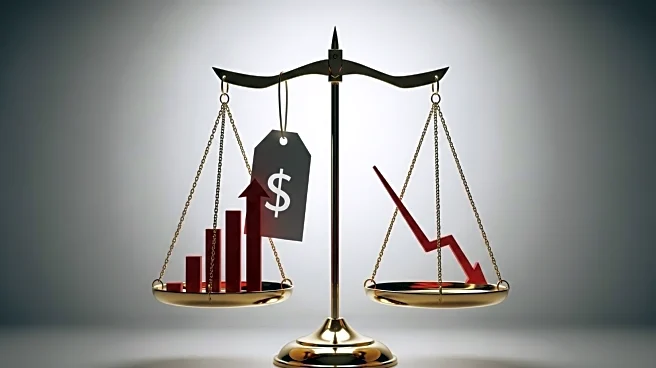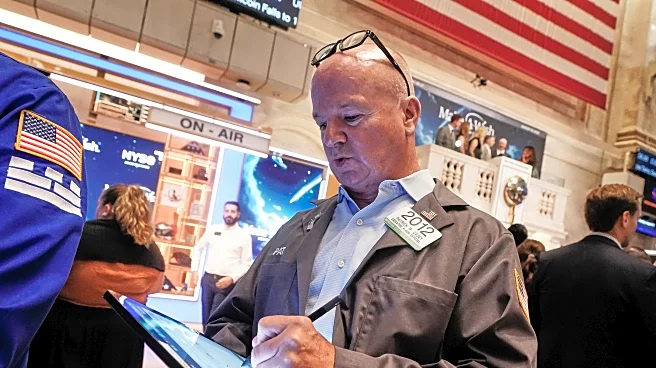What's Happening?
The Federal Reserve is navigating a complex economic landscape in 2025, with core PCE inflation rising to 2.9% year-over-year in July, driven by services inflation and tariffs from the Trump era. This inflation rate exceeds the Fed's 2% target, complicating its ability to implement rate cuts. Despite labor market weaknesses, investors are pricing in an 87% chance of a 25-basis-point cut at the September meeting. Tariffs on steel, aluminum, and semiconductors have exacerbated supply chain issues, raising costs for manufacturers and consumers. The equity market has responded with tech stocks underperforming, while sectors like cybersecurity and defense have gained traction.
Why It's Important?
The Fed's dilemma highlights the tension between controlling inflation and supporting economic growth. Persistent inflation, exacerbated by tariffs, poses long-term risks to the U.S. economy, potentially reducing GDP and wages. The market's anticipation of rate cuts reflects optimism, but the Fed's cautious stance suggests that monetary policy changes may be incremental. This situation affects equity valuations, particularly in tariff-exposed sectors, and underscores the need for strategic investment decisions. The Fed's actions will have significant implications for economic stability and investor confidence.
What's Next?
The Fed's September meeting will be crucial in determining the direction of monetary policy. If inflation remains high, the Fed may delay rate cuts, impacting sectors sensitive to interest rate changes. Investors will need to monitor the Fed's communication and adjust their strategies accordingly. The ongoing debate over tariffs and their economic impact may influence future policy decisions, with stakeholders considering alternative approaches to address inflation and support domestic industries.













